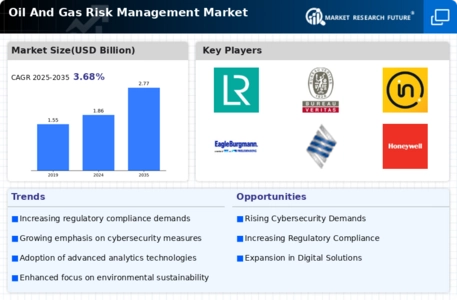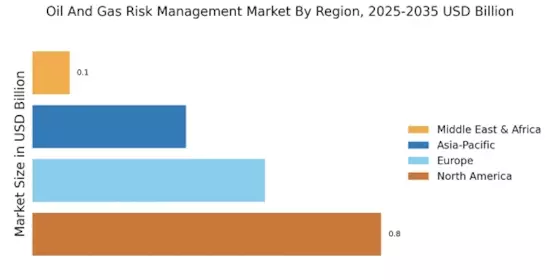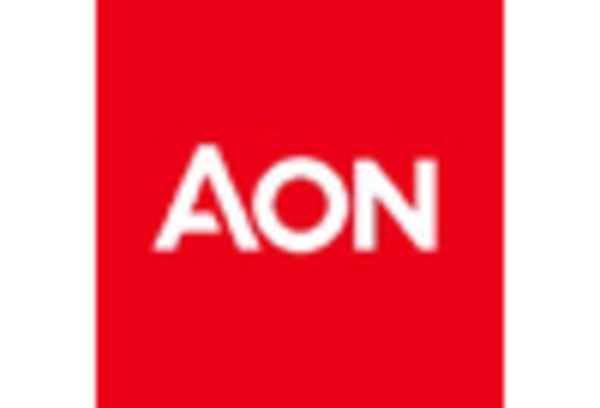Rising Geopolitical Tensions
Geopolitical tensions are increasingly influencing the Oil And Gas Risk Management Market. As conflicts arise in key oil-producing regions, companies face heightened risks related to supply chain disruptions and asset security. The volatility in oil prices, often exacerbated by geopolitical events, necessitates robust risk management frameworks to safeguard investments. According to recent analyses, firms that implement comprehensive risk management strategies are better positioned to navigate these uncertainties, potentially reducing financial losses by a significant margin. This trend underscores the importance of adaptive risk management solutions in the Oil And Gas Risk Management Market, as companies seek to mitigate the impacts of geopolitical instability.
Focus on Operational Efficiency
Operational efficiency remains a critical driver in the Oil And Gas Risk Management Market. Companies are under constant pressure to optimize their operations while managing risks effectively. The implementation of risk management frameworks that enhance operational efficiency can lead to significant cost savings and improved productivity. Industry studies suggest that organizations that prioritize risk management alongside operational efficiency can achieve up to a 20% reduction in operational costs. This dual focus not only mitigates risks but also positions firms competitively in a challenging market landscape. As such, the drive for operational efficiency is likely to continue influencing investments in the Oil And Gas Risk Management Market.
Growing Demand for Energy Security
The quest for energy security is a driving force in the Oil And Gas Risk Management Market. As nations strive to ensure a stable energy supply, the focus on risk management becomes paramount. Companies are increasingly investing in risk assessment and mitigation strategies to protect against supply chain vulnerabilities and market fluctuations. Reports indicate that the global energy demand is expected to rise, prompting firms to enhance their risk management capabilities to maintain operational continuity. This growing emphasis on energy security is likely to stimulate investments in the Oil And Gas Risk Management Market, as organizations seek to fortify their resilience against potential disruptions.
Increasing Environmental Regulations
The Oil And Gas Risk Management Market is experiencing heightened scrutiny due to increasing environmental regulations. Governments are implementing stricter policies aimed at reducing carbon emissions and promoting sustainable practices. This regulatory landscape compels companies to adopt comprehensive risk management strategies to ensure compliance and mitigate potential penalties. For instance, the International Energy Agency has reported that investments in environmental risk management are projected to rise significantly, reflecting a growing recognition of the need for sustainable operations. As a result, firms are likely to allocate more resources towards risk management solutions that address environmental concerns, thereby driving growth in the Oil And Gas Risk Management Market.
Technological Innovations in Risk Assessment
Technological advancements are reshaping the Oil And Gas Risk Management Market, particularly in risk assessment methodologies. The integration of artificial intelligence and machine learning enables companies to analyze vast datasets, enhancing predictive capabilities and decision-making processes. For example, the adoption of advanced analytics tools has been shown to reduce operational risks by up to 30%, according to industry reports. These innovations not only streamline risk management processes but also improve the accuracy of risk assessments, allowing firms to proactively address potential threats. Consequently, the demand for sophisticated risk management technologies is expected to surge, further propelling the Oil And Gas Risk Management Market.


















Leave a Comment